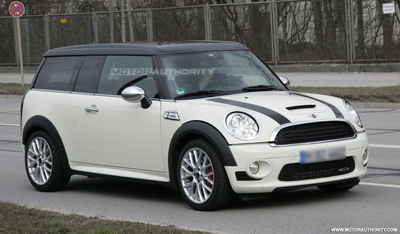The Mini One R56 (facelift 2010)
Introduction
The Mini One R56, introduced in 2006, received a facelift in 2010 that brought a fresh look and several improvements to this iconic car model. The Mini One has always been known for its compact size, unique design, and agile handling. With the facelift, Mini aimed to enhance the car's appeal by updating its exterior styling, improving its performance, and adding new features to enhance the driving experience.
Exterior Changes
The facelifted Mini One R56 featured a revised front bumper with integrated fog lights and a redesigned lower grille. The headlights were also given a new look, with LED daytime running lights becoming a standard feature. At the rear, the tail lights were redesigned, featuring a new pattern that added a contemporary touch to the Mini's classic design. The overall result was a more modern and refreshed appearance.
Enhanced Performance
Under the hood, the Mini One R56 (facelift 2010) received several improvements to its powertrain. The 1.6-liter four-cylinder engine was updated to comply with Euro 5 emissions standards, reducing its carbon footprint while maintaining its peppy performance. The engine produced a respectable 98 horsepower, providing ample power for urban commuting and spirited driving on winding roads. Additionally, Mini introduced a six-speed automatic transmission option, offering smoother gear changes and improved fuel efficiency.
Interior Upgrades
Inside the cabin, the Mini One R56 received some notable upgrades. The dashboard was redesigned, featuring new materials and a more ergonomic layout. A center-mounted speedometer, a signature design element of Minis, remained, but was complemented by a new digital display providing additional information to the driver. The seats were also updated, offering improved comfort and support during long drives. The facelift also brought new options for upholstery colors and trims, allowing for a more personalized and high-end feel.
Technological Advancements
With the 2010 facelift, Mini incorporated new technologies to enhance the driving experience. The Mini One R56 now featured an improved infotainment system with a larger display and more intuitive controls. Bluetooth connectivity became standard, allowing for hands-free phone calls and audio streaming. Optional extras included a built-in navigation system, a premium sound system, and a USB port for device charging and connectivity. These technological advancements elevated the Mini One R56's appeal, making it a well-rounded choice in the compact car segment.
Safety Features
In terms of safety, the Mini One R56 (facelift 2010) offered a range of features to protect its occupants. Standard safety equipment included antilock brakes, stability control, and multiple airbags throughout the cabin. Optional extras included adaptive headlights, rear parking sensors, and a tire pressure monitoring system. These features ensured that the Mini One R56 provided a safe and secure driving experience, adding to its appeal as a practical and reliable choice.
Conclusion
The Mini One R56 (facelift 2010) took an already beloved car model and improved it in various ways. With refreshed styling, enhanced performance, upgraded interior features, and new technologies, the Mini One R56 offered a more refined and enjoyable driving experience. Its compact size, combined with its nimble handling, made it perfect for navigating urban environments, while its stylish design and high-quality finishes added a touch of sophistication. Whether you were looking for a practical daily driver or a fun weekend cruiser, the Mini One R56 (facelift 2010) delivered on both fronts, solidifying its place in Mini's lineup of exceptional cars.

